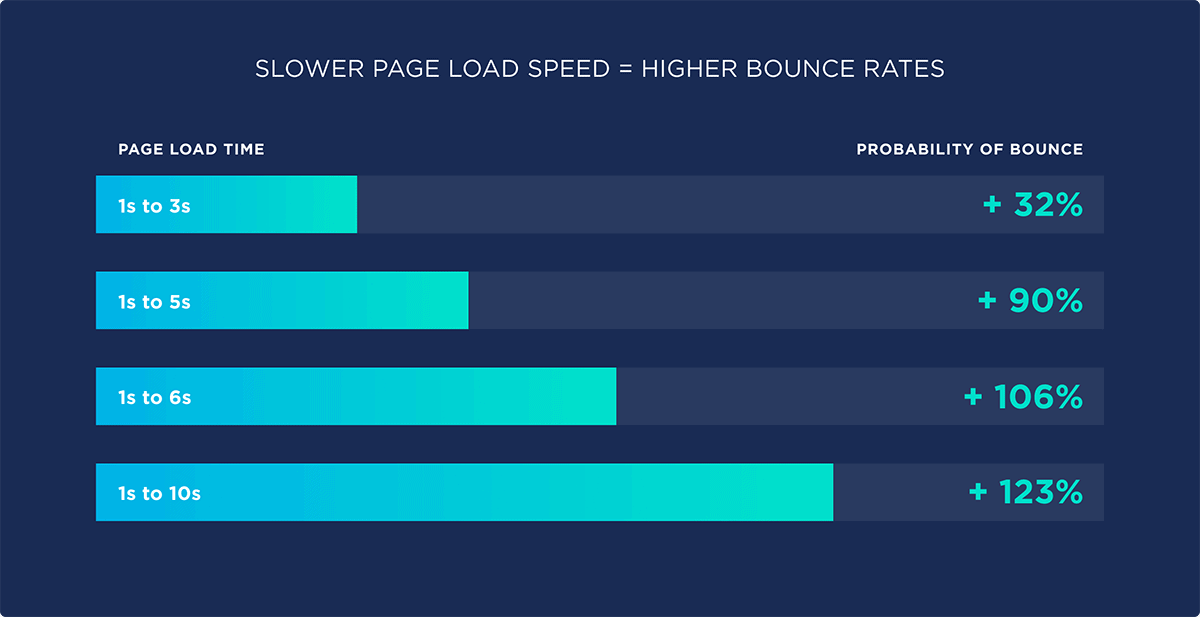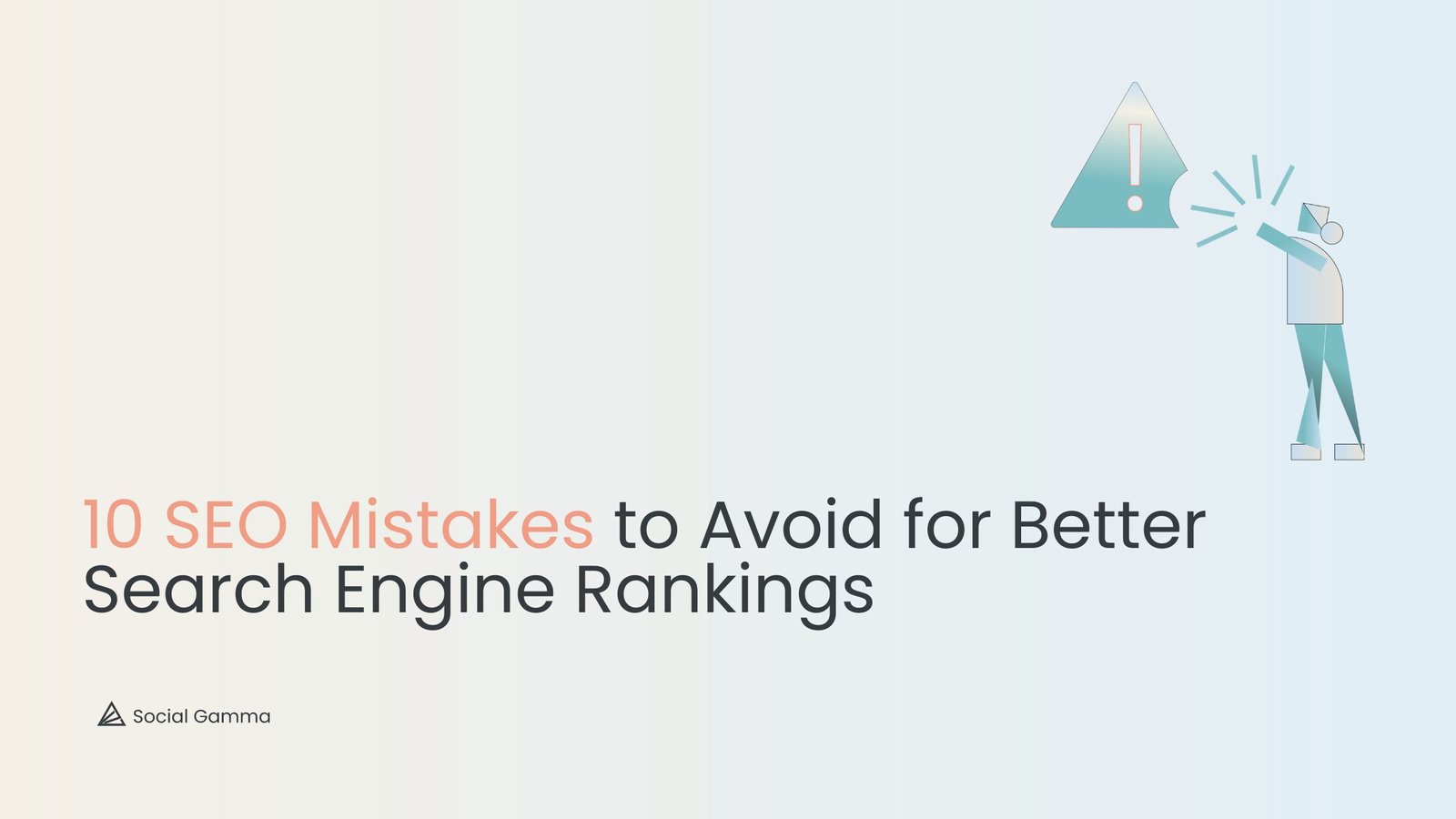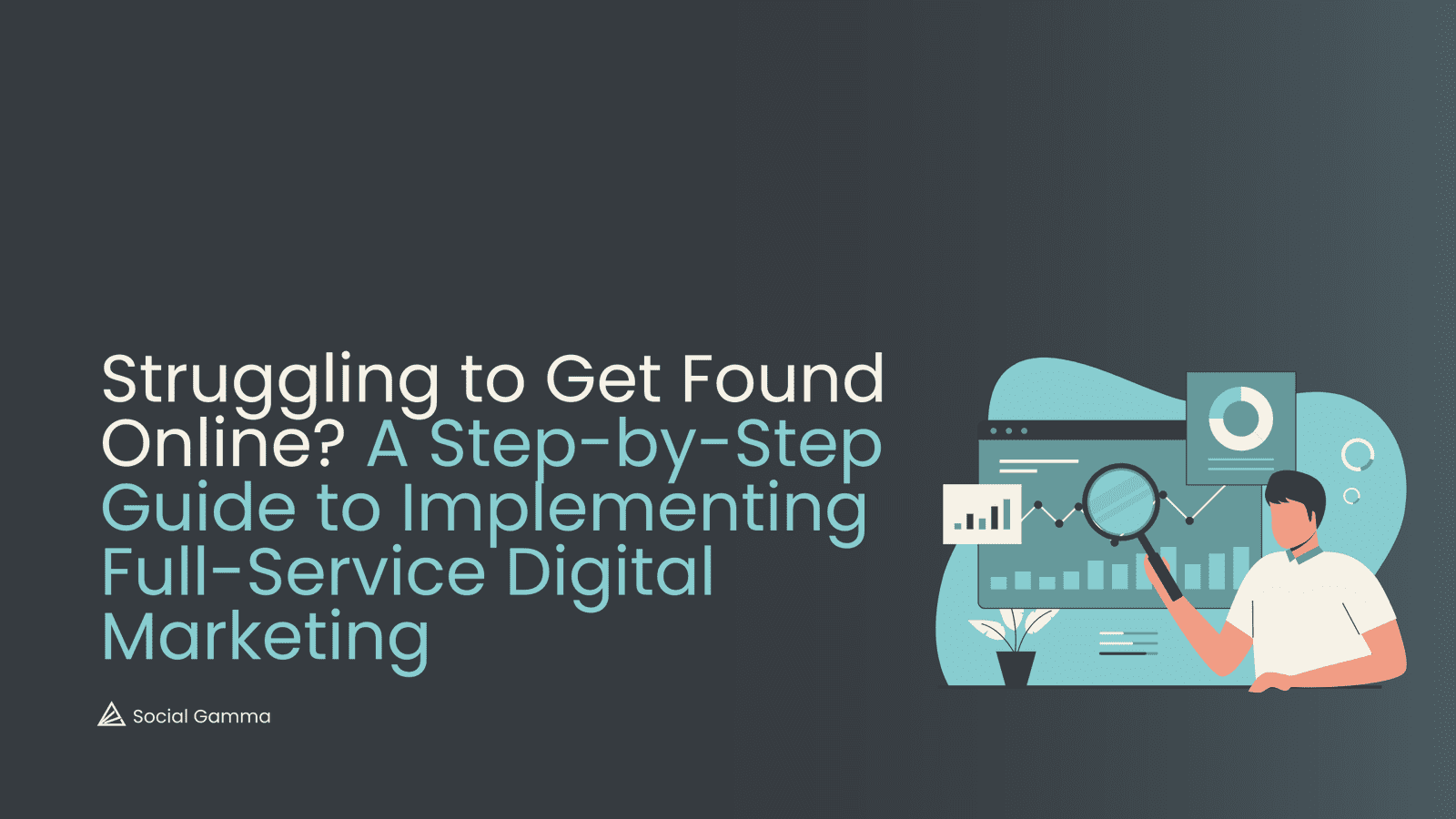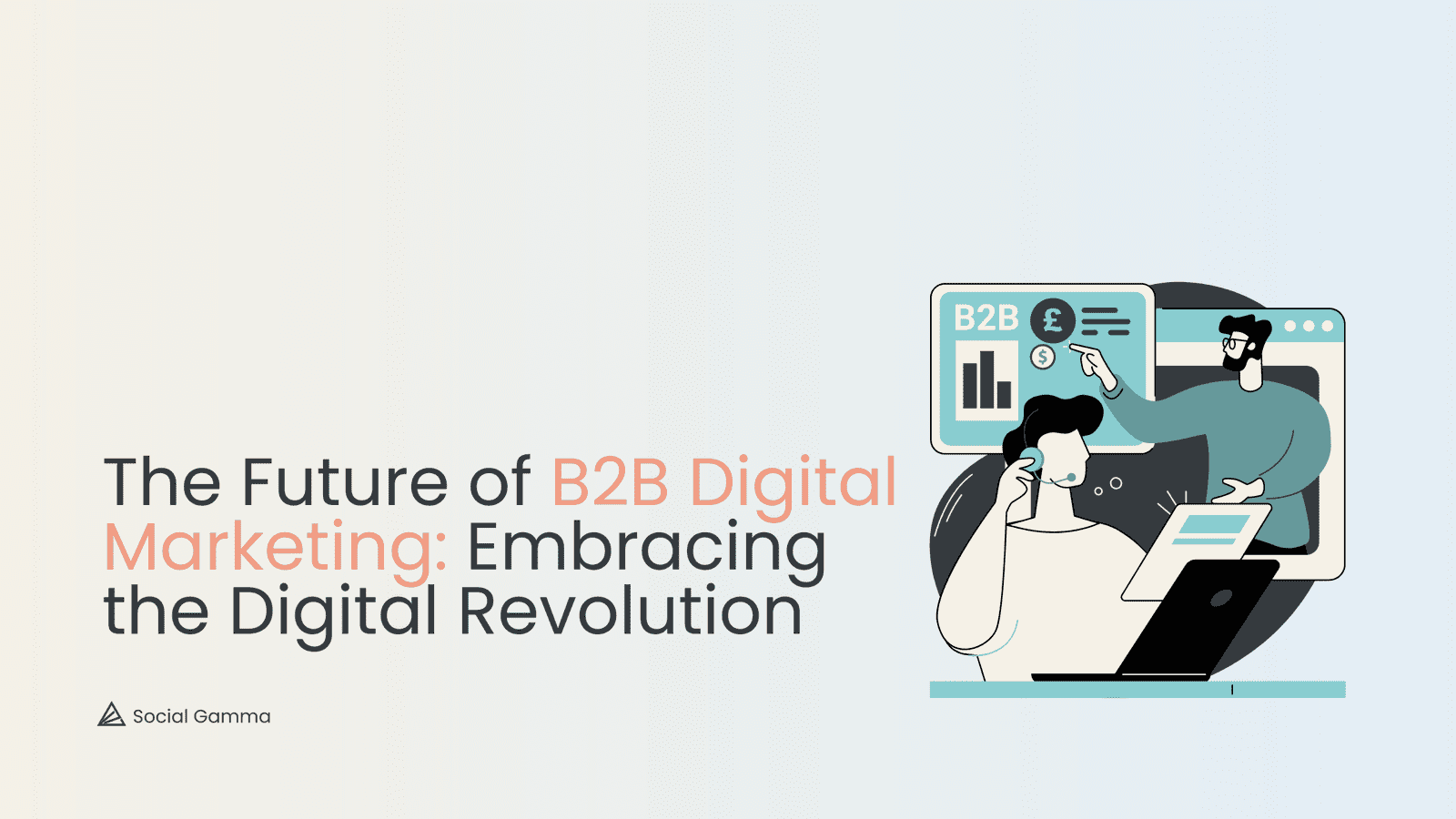SEO is a crucial aspect of any online business, offering the potential for increased visibility and higher website rankings. However, with an ever-evolving landscape of algorithms and best practices, it is surprisingly easy to make mistakes.
This detailed list aims to highlight ten common SEO pitfalls that can harm your search engine rankings and provides practical advice on how to avoid them to ensure your website’s SEO health.
Contents
- 1 1. Overlooking the Importance of Keyword Research
- 2 2. Failing to Align Content with User Search Intent
- 3 3. Choosing Overly Competitive Keywords
- 4 4. No Focus on Building Sufficient Backlinks
- 5 5. Violating Google’s Guidelines in Link-Building Efforts
- 6 6. Overlooking Opportunities for Internal Linking
- 7 7. Not Allowing Google to Crawl Your Site Effectively
- 8 8. Not Allowing Google to Index Your Content
- 9 9. Excessively Slow Website Speed
- 10 10. Viewing SEO as a One-Time Job
1. Overlooking the Importance of Keyword Research
A staggering 93% of online experiences begin with a user typing keywords into a search engine.
Failing to conduct thorough keyword research is one of the most detrimental mistakes you can make when it comes to SEO. It’s a fundamental aspect that lays the foundation of a successful SEO strategy. In a nutshell, it’s the process of identifying popular words and phrases that people enter into search engines with the ultimate goal of figuring out what to rank for.
Without proper keyword research, your content can become directionless, and you essentially put yourself in a situation where you gamble on the whims of search engine algorithms. You might well be producing high-quality content, but if it’s not aligned with what your target audience is searching for, it won’t serve the purpose of attracting and retaining visitors.
There is so much more to Keyword research than just identifying the most searched terms for your industry. It provides insights into your audience’s needs and preferences, helping you understand market behaviour and trends. Hence, neglecting keyword research will create missed opportunities to understand your audience and improve your SEO performance.
2. Failing to Align Content with User Search Intent
When it comes to search engine optimisation, aligning your content with user search intent is as critical as keyword research. It refers to understanding the reason behind the keywords or phrases that users enter into search engines.
For instance, when searching for a term, a user could be looking for information (‘informational intent’), intending to make a purchase (‘transactional intent’), performing research (‘commercial investigation’) or looking to visit a specific website (‘navigational intent’).

Failing to align your content with the correct user search intent can be detrimental to your SEO efforts. For example, if your content targets transactional keywords but is purely informational, it may rank lower in search engine results pages (SERPs) because it fails to meet the user’s anticipated needs.
Furthermore, search engines like Google have evolved to prioritise search intent over keyword optimisation. This shift means that even if your content is well-optimised for keywords, it won’t rank high if it isn’t aligned with the user’s intent. As a result, focusing on user intent can lead to higher click-through rates, lower bounce rates, and improved conversion rates, all of which contribute to better SEO performance.
Aligning content with user search intent allows you to create a more personalised and meaningful experience for your audience. It enables you to provide the exact content they’re looking for, increasing user satisfaction and fostering a sense of trust and loyalty in your brand. Therefore, understanding and aligning with user search intent should be a key element of your SEO strategy.
3. Choosing Overly Competitive Keywords
Choosing overly competitive keywords is often a misguided strategy when attempting to improve search rankings. The allure of high-volume keywords is understandable – they have the potential to drive significant traffic. However, the competition for these high-volume terms is usually fierce, particularly from established industry giants who command high domain authority. It’s often a David vs. Goliath scenario where new or less-known websites struggle to outrank these SEO powerhouses.

Moreover, high-competition keywords can also be broader, and may not necessarily align with the specific intent of your target audience. Ranking for broad, competitive terms does not guarantee relevant traffic, which is key for conversion. In contrast, long-tail keywords, although having lower search volumes, are typically less competitive and more aligned with specific user needs, leading to higher-quality traffic and improved conversion rates.
Therefore, focusing solely on competitive keywords without considering competition level, user intent, or relevancy can be detrimental to SEO performance. It’s essential to balance the temptation of high-volume terms with the practicality and specificity of more niche, less competitive keywords. This approach will lead to better engagement metrics, improve rankings over time, and ultimately, be more beneficial for your overall SEO strategy.
4. No Focus on Building Sufficient Backlinks
Backlinks, also known as inbound or incoming links, are a critical element of a robust SEO strategy. They serve as ‘votes of confidence’ from other websites, signalling to search engines that your content is valuable and trustworthy. However, not giving enough attention to building a sufficient number of high-quality backlinks can negatively impact your website’s SEO performance.
Search engines like Google consider backlinks as a key ranking factor due to their correlation with the quality and relevance of your content. If multiple reputable websites are linking back to your pages, it suggests that your content is likely to be useful and informative, resulting in improved search rankings. Conversely, a lack of backlinks can make your website seem less authoritative or trustworthy, potentially decreasing your visibility in search results.
Interestingly, around 94% of all blogs currently available do not have any external links associated with them.
Backlink building, however, should not be about quantity alone. The quality and relevancy of the websites linking to you are just as important, if not more so. Links from high-authority, relevant websites carry more weight than those from low-quality or unrelated sites. An influx of low-quality or spammy backlinks can harm your SEO, as search engines may perceive it as an attempt to manipulate rankings.
Therefore, an effective backlink strategy requires consistent effort, time, and resources. It involves creating high-quality, shareable content, creating relationships with other industry websites, and continuously monitoring and managing your backlink profile. Ignoring this vital aspect of SEO can hinder your ability to rank competitively in search engine results and reach your target audience.
5. Violating Google’s Guidelines in Link-Building Efforts
Violating Google’s guidelines in link-building efforts is a grave SEO mistake that can have severe consequences on your website’s search rankings. Google’s guidelines explicitly warn against manipulative link schemes, such as buying or selling links, excessive link exchanges, or using automated programs to create links. These tactics, while potentially offering short-term gains, are seen as attempts to game the system and can lead to penalties, including a decrease in site ranking or removal from Google’s index altogether.
Moreover, participating in link schemes not only undermines the credibility of your website in the eyes of the search engine but also tarnishes your reputation among users and industry peers. It signals a lack of commitment to providing genuine, high-quality content, which can deter users and lower engagement rates. Thus, this unethical approach to backlink building not only violates Google’s guidelines but also devalues the user experience—two factors that can significantly hamper your SEO efforts.
While backlinks play a crucial role in SEO, they must be obtained through ethical, user-focused strategies that align with Google’s guidelines. Violating these guidelines to pursue higher rankings is shortsighted and detrimental to your long-term SEO success.
6. Overlooking Opportunities for Internal Linking
An often overlooked aspect of SEO is the potential of internal linking strategies. Internal links, those that connect different pages within the same website, serve multiple purposes that can enhance a site’s SEO performance and improve search rankings.
Internal links primarily aid website navigation, guiding users and search engine crawlers through a network of interconnected pages. They enhance the user experience by providing related and valuable content, thereby increasing the time visitors spend on your site. This signals to search engines that your site delivers value, which can improve your ranking in search results.

From an SEO perspective, internal links distribute link equity across web pages, affecting how a search engine perceives the importance of pages. By strategically linking to underperforming pages from those with high traffic or authority, you can elevate their visibility and ranking in search results.
However, similar to other SEO strategies, internal linking should provide genuine value to the user and align with the overall content strategy. Overuse or misuse of internal links, such as excessive links or irrelevantly linked content, can lead to a negative user experience and could potentially harm your SEO efforts.
7. Not Allowing Google to Crawl Your Site Effectively
A fundamental aspect of SEO is ensuring your site is easily crawlable by search engines, particularly Google. When you fail to allow Google to effectively crawl your site, it becomes a significant SEO mistake, negatively affecting your chances of ranking higher in search results.
Google uses automated robots, known as “Googlebots,” to crawl the web, find new and updated content, and index it. In simple terms, if Google can’t crawl your site effectively, your pages may not get indexed, severely impacting your visibility on the search engine.
There are several ways in which website owners inadvertently obstruct Google’s crawling process. One common mistake is the improper use of robots.txt files. These files allow you to control which pages on your site you want Google to crawl and which you’d prefer to keep hidden. However, incorrect configurations can accidentally block important pages from Googlebots.
Another common mistake pertains to your website’s architecture. If your site has a complex navigation system or a deep page hierarchy, it may be difficult for Googlebots to find all your pages. It’s crucial to maintain a clean, organised site structure to ensure all your valuable content is accessible and easily discoverable by Google.
Moreover, slow loading times can hinder the crawling process. Google allocates a crawl budget to each site – a limit on the site’s crawl activity based on its size and speed. If your site is slow, Google may exhaust the budget before it has crawled all your pages.
Lastly, broken links and error pages can disrupt the crawling process and create a poor user experience, which Google considers when ranking sites. Regularly checking and fixing these issues is essential for maintaining an effective, crawlable site.
8. Not Allowing Google to Index Your Content
Allowing Google to index your content is a fundamental aspect of SEO, but several issues can hinder this process, leading to a lower ranking. One such problem is duplicate content. When multiple pages on your site contain the same or very similar content, Google struggles to understand which version to include/exclude from its index. This duplication confuses Google’s algorithm, potentially leading to a lower ranking for your pages.
Cloaking is another SEO mistake that negatively impacts your ranking. It involves showing different content or URLs to Google’s bots than what is presented to users. Google considers this practice deceptive and against its guidelines, resulting in penalties that can significantly impact your search engine visibility.
Moreover, if your website has been hacked, Google may notify users that your site could be compromised, which dramatically reduces your click-through rate and negatively impacts your ranking. Making sure your website’s security is robust and up-to-date is crucial to avoid this.
Lastly, keyword stuffing is a common SEO mistake. While it’s important to include keywords in your content, overuse can lead to a negative user experience and can harm your site’s ranking. It’s essential to create content with the user in mind, using keywords strategically and sparingly.
By avoiding this mistake, you can increase your chances of allowing Google to index your content and improve your search engine ranking.
9. Excessively Slow Website Speed
Excessive website loading speed is another common SEO mistake that can significantly affect your search engine rankings. In today’s fast-paced environments, users expect websites to load swiftly and seamlessly. According to research, a delay of just one second in page load time can lead to a 7% loss in conversions, 11% fewer page views, and a 16% decrease in customer satisfaction. Moreover, Google incorporates site speed into its algorithm due to its impact on user experience.

A slow-loading website doesn’t just frustrate your visitors – it also sends negative signals to Google about your website’s user-friendliness, potentially leading to a lower ranking in search results. Google’s PageSpeed Insights is a useful tool to analyse and optimize your website speed. Therefore, regular monitoring and optimizing your site’s load speed can significantly enhance your SEO efforts and your website’s overall performance.
10. Viewing SEO as a One-Time Job
One common mistake that can have a profound impact on your ability to rank higher in search engine results is the view of SEO as a one-time or infrequent activity. SEO is not a ‘set-it-and-forget-it’ task. but rather an ongoing process that requires continuous attention, adjustment, and optimisation.
Usually, the results of SEO become noticeable within a time frame of three to six months – However, it is entirely dependent on SO many factors.
Search engine algorithms are constantly evolving, and so too must your SEO strategies to remain competitive. Google, Bing, and other search engines regularly update their algorithms to improve search quality for their users. These updates may affect your website’s ranking if your SEO strategy does not adapt accordingly.
Furthermore, your competitors are also continuously improving their SEO efforts, pushing you to stay ahead. If you rest on your laurels after initial SEO optimisation, you risk falling behind and losing your hard-earned search engine ranking.
User behaviour and preferences change over time, affecting the effectiveness of keywords and content strategies. Regular analysis and adjustment of your SEO strategy will ensure that your content remains relevant and appealing to your target audience.
The bones of a successful SEO strategy are dynamic, evolving, and adaptable, reflecting the ever-changing landscape of search engines, competitor activity, and user behaviour.
About us
At Social Gamma, our digital marketing solutions merge empowerment and expertise, driven by meticulous analysis and unrivalled insights that breathe life into your aspirations.
We embrace the art and science of digital marketing, combining data-driven strategies with human insights to create impactful campaigns that leave a lasting impression.
We’re big enough to achieve, but small enough to care.
Do you want to know more?
If you found this article interesting and useful, follow us on our social media channels to stay updated with our weekly digital marketing insights.
If you want to learn more about our services then contact us


